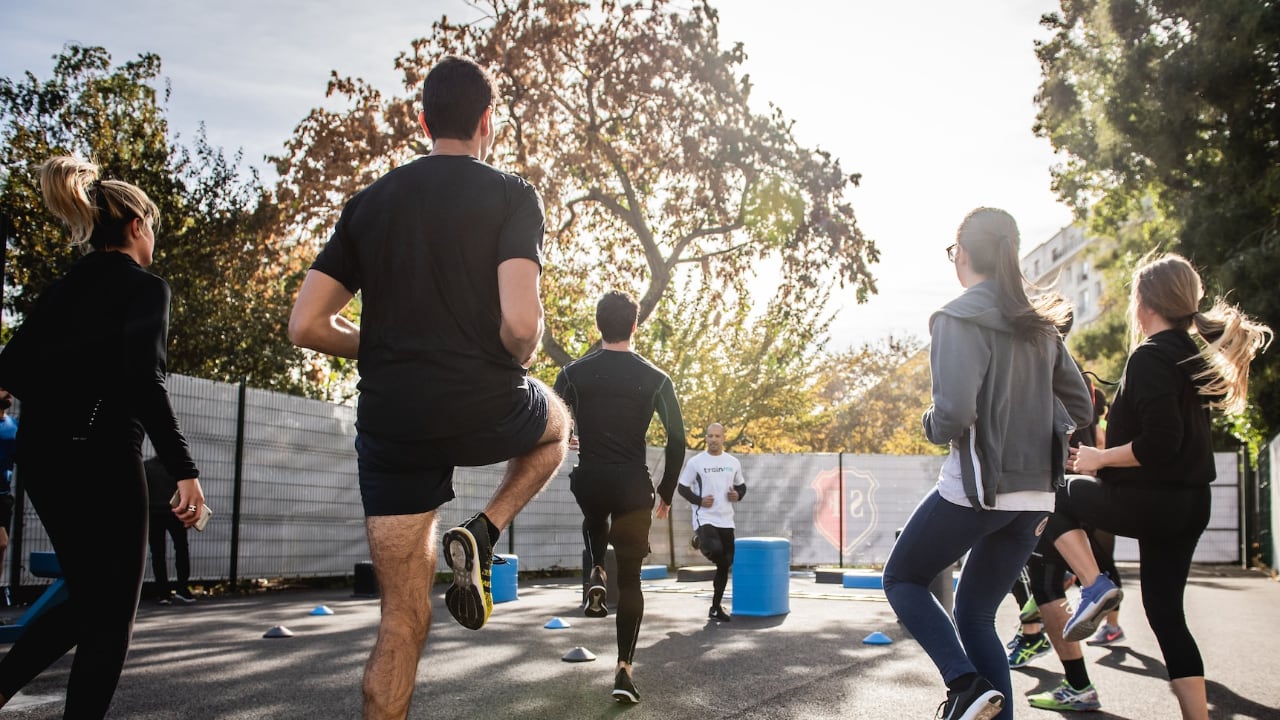Updated October 21, 2023
It’s important to note that opinions on pre-workout nutrition vary among individuals, with many having strong preferences. Athletes often have their own tried-and-true routines.
The ideal timing and content of pre-workout meals depend on personal goals. This article will delve into the advantages, disadvantages, and misconceptions regarding exercising on an empty stomach.
Pros and Cons of CrossFit on an Empty Stomach
The pros of fasted CrossFit include:
- Enhanced fat burning. When you’re in a fasted state, your body must rely on fat for fuel. This can help you lose fat faster, especially stubborn belly fat. Some research shows that fasted cardio may burn up to 20% more fat than non-fasted cardio. The same may apply to fasted CrossFit workouts.
- Increased growth hormone. Working out while fasting can increase human growth hormone by 1,300 percent.[2] Coupled with the high-intensity nature of CrossFit workouts, these hormone changes can accelerate strength and conditioning gains and cause lean muscle growth and decreased fat storage.
- Improved insulin sensitivity. Training on an empty stomach can improve how your cells respond to insulin, the hormone that shuttles nutrients into cells. Good insulin sensitivity is essential for health, body composition, and performance. It allows your body to use carbs and protein more efficiently to build muscle.
However, there are some downsides to consider:
- It may hinder performance. Without pre-workout fuel, you may feel more fatigued and unable to lift as heavy or go as intense.
- It only suits some. Some people feel lightheaded, nauseous, or unable to recover as quickly from fasted workouts. You need to see how you personally respond.
How We Store and Obtain Energy
To understand how fasted CrossFit works, you should know how your body stores and utilizes energy. Your body stores energy from the carbohydrates, fat, and protein you eat. Carbs are stored as glycogen in your muscles and liver. Fat is stored in adipose tissue. Protein is found in your muscles, organs, and blood plasma.
When you eat before a workout, your body uses the energy from your last meal for fuel – primarily in the form of glycogen and blood glucose. However, when you workout on an empty stomach after fasting for 12-16 hours, your body must tap into your fat stores to provide energy because there is little glycogen or blood glucose available.
This is why fasted workouts can burn more fat. Your body is forced to use fat for fuel instead of the carbs and glucose you would have consumed from your last meal. Some studies show fasted cardio can burn up to 20% more fat than non-fasted cardio. The same may apply to fasted CrossFit, although this would apply to metcons vs the strength training aspects.
The downside is without those carbs and glucose for energy, your performance may decrease slightly during fasted workouts. However, your body is very adaptable. Over time, it can get better at burning fat for fuel, and your performance may improve. The key is starting slowly and being adequately hydrated before fasted CrossFit.
Risk of Muscle Loss?
One of the biggest myths surrounding fasted CrossFit is that it causes muscle loss. Your body will not burn muscle for fuel during fasted workouts unless you are in an extremely catabolic state, such as severe calorie restriction for a prolonged period.
Under normal circumstances, your body prefers to burn fat for energy instead of muscle. Fat is a more efficient fuel source, and your body aims to preserve muscle whenever possible. The only time your body breaks down muscle is when fat stores are nearly depleted, and there are no other options for energy.
As long as you consume enough protein and calories to maintain your muscle overall, the amount of muscle lost during fasted CrossFit will be minimal. Some studies show no difference in muscle loss between fasted and non-fasted cardio when protein intake is adequate.
The key is to eat plenty of protein with each meal, especially after your fasted workout. Aim for 20 to 30 grams of protein within an hour or two after fasted CrossFit. Good options include:
- A protein shake made with whey protein powder and milk or a milk alternative like almond milk.
- Grilled chicken, fish, or lean meat with vegetables.
- Eggs – Have an omelet, scramble, or poach 2-3 eggs.
- Lentils, beans, and legumes – A bowl of chili or stew.
- Greek yogurt with granola and fruit.
Providing your body with adequate protein and calories around your fasted workouts will minimize any potential muscle loss. The idea that fasted CrossFit significantly reduces muscle is a myth not supported by science. While a small amount of muscle breakdown may occur during exercise, your body is able to rapidly rebuild muscle with proper nutrition – especially protein and rest.
Muscle loss would likely not be a concern with fasted CrossFit if you eat enough protein and maintain an adequate calorie intake. Focus on consuming 20-30 grams of protein within 1-2 hours after your workout to maximize muscle protein synthesis. Keep your protein intake consistent throughout the day with meals and healthy snacks.
Does it Improve Performance?

Whether fasted CrossFit improves performance is debatable. Some studies show fasted cardio may decrease performance due to less available energy from carbs and glucose. However, other research found no difference in performance between non-fasted and fasted exercise. A lot depends on the individual and the intensity of the workout.
For some people, fasted workouts feel more difficult and tiring without pre-workout fuel. You may not be able to lift as heavy or go as intensely without carbs for energy. However, your body can adapt over time to become better at burning fat for fuel during exercise.
Performance may improve as your body gets used to fasted training.
The key is starting slowly and listening to your body. Begin with just 2-3 fasted workouts per week, and keep the intensity slightly lower than usual. Stay well hydrated, and break your fast within an hour or two after exercise. As your body adapts, you can build up the frequency and intensity.
Recommended Strategy
The key to successful fasted CrossFit is using a strategic approach based on your goals and how you personally respond. Here are some recommendations to get started:
- Start with a shorter fast. Begin with a 12-14 hour fast to allow your body to adapt. For example, stop eating at 8pm and work out the next morning. See how you feel, and you can extend it to 16 hours over time.
- Focus on fat-burning workouts. Emphasize metcons, cardio, bodyweight exercises, and higher reps. These workouts are well suited for fasted training. Save heavy lifting for your non-fasted workouts.
- Stay hydrated. Drink plenty of water before, during, and after fasted CrossFit. Dehydration will severely impact your performance and recovery.
- Break your fast post-workout. Have a balanced meal with carbs, protein, and fat within 1-2 hours after your workout. Good options include a smoothie, eggs, or grilled chicken with rice and veggies.
- Consider cycling. For the best results, consider alternating between fasted and fed CrossFit days. This prevents adaptation and keeps your body guessing. It also allows for both heavy and metabolic-style workouts.
- Adjust as needed. Pay attention to how you feel during fasted workouts and make changes accordingly. If your performance or recovery starts to suffer, you may need to shorten your fast, decrease intensity, or cycle in more fed days. Be flexible and listen to your body.
By following these recommendations, you can implement fasted CrossFit safely and effectively. Start slowly, focus on fat burning, stay hydrated, fuel properly around workouts, and make adjustments based on your response. Be willing to cycle between fed and fasted days for the best results.
With time and consistency, your body will get better at burning fat for fuel and your performance during fasted workouts may improve. But always put your health and recovery first. Fasted CrossFit is not for everyone, so make sure it works for your body before fully committing to it.
Intermittent Fasting

If one of your fitness goals is to lose weight and lean out, you should probably experiment with intermittent fasting. Intermittent fasting involves not eating for 16-20 hours in a row. Check out our guide on the best intermittent fasting books for helpful information. There are many documented health benefits to an occasional intermittent fast, including increased fat burning, shifting to fat as your primary fuel source, normalizing insulin sensitivity, and lowering triglycerides.[1] Working out on an empty stomach has many of the same effects. Because the body has no readily available blood glucose, it will tap into the next ready available source of fuel – adipose tissue (fat).
The Bottom Line
Fasted CrossFit can be a safe and effective way to boost fat burning when done properly, but it may not suit everyone. Using a strategic approach, starting slowly, staying hydrated, and fueling well around workouts, you can maximize the benefits of fasted training while minimizing the risks. However, you need to pay attention to how you personally respond to fasted exercise and adjust as needed.
Fasted CrossFit is not a “miracle fat loss solution” and should be used strategically. Combining with a balanced diet and proper recovery can accelerate fat burning. However, it may not improve performance or muscle gain on its own. For the best results, take an integrated approach with both fasted and non-fasted training based on your needs and response.
Personally, I have experimented with working out on empty and had great success. That said, I would never work out on empty during a competition or a day I wanted to have my absolute best performance.
Part of CrossFit is constantly varying our workouts, and I encourage everybody to experiment with varying your pre-workout eating habits (again, depending on your goals) to find out what works best for you.
References:
[1] http://fitness.mercola.com/sites/fitness/archive/2013/06/28/intermittent-fasting-health-benefits.aspx
[2] http://www.naturalnews.com/034704_intermittent_fasting_fitness_HGH.html







